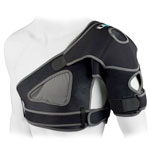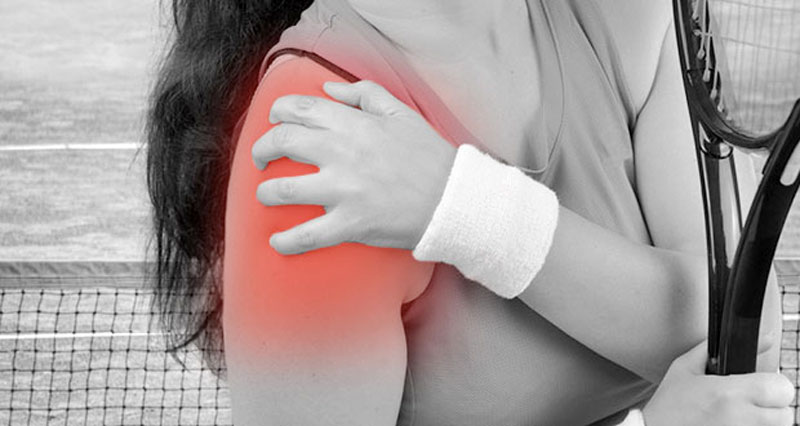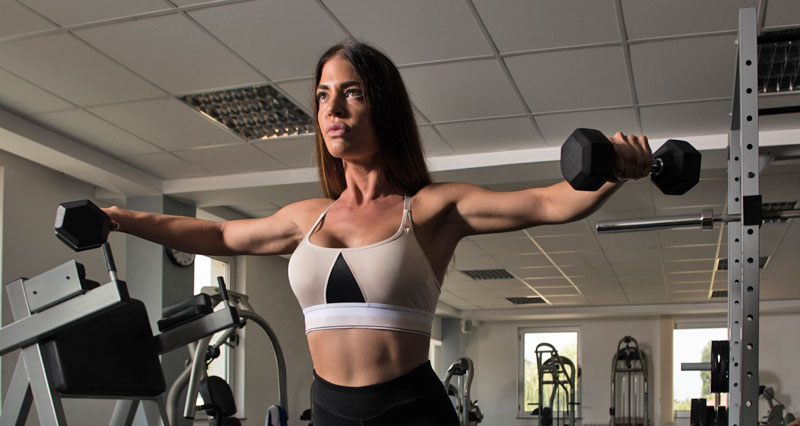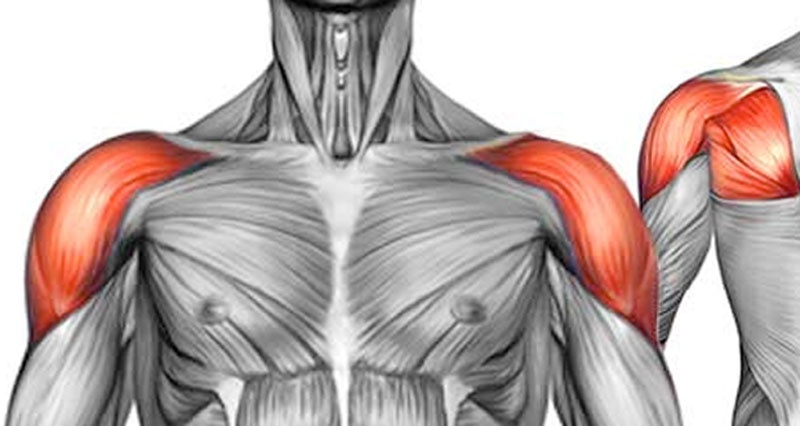The anatomy of the shoulder consists of the shoulder joint and shoulder girdle. Both work together to produce normal movements. The shoulder is a complex joint with high mobility but a lack of stability. Here we explain the basic anatomy of the shoulder.
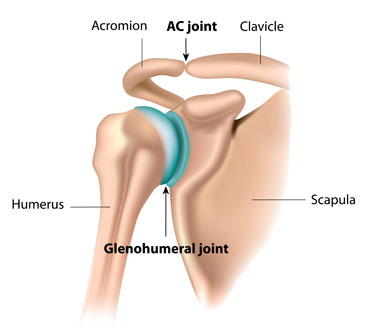
The Shoulder Girdle
The anatomy of the shoulder girdle consists of several joints, or articulations, which connect the upper limb to the rest of the skeleton. You may also see this referred to as the pectoral girdle in some textbooks.
The three bones which form the shoulder girdle are the clavicle, scapula, and humerus.
The Scapula (or shoulder blade)
This scapula is an attachment site for muscles which support and stabilise shoulder movement. It sits at the back of the shoulder, over the 2nd – 7th ribs and tilts forward at a 30° angle.
It is encased by 17 muscles which provide control and stabilisation against the thoracic wall (the ribcage). This is sometimes referred to as the Scapulothoracic joint, although it is not technically an actual joint.
The scapula has a shallow fossa (socket) on its lateral (outside) edge into which the head of the humerus fits. The humerus and fossa form the glenohumeral joint.
The Clavicle (collar-bone)
The clavicle is an S-shaped bone and is the main connection between the upper arm and the rest of the skeleton. Consequently, the clavicle is also an important site for muscle attachments including:
- Pectoralis Major
- Trapezius
- Sternocleidomastoid
- Sternohyoid
- Subclavius
The clavicle meets the scapula at the top of the shoulder where it connects to the acromion process, forming the acromioclavicular joint (AC joint). Injury to the ligaments at this joint is an acromioclavicular joint sprain.
The Humerus (upper arm bone)
The humerus is the upper arm bone. The head of the humerus is the ball of the ball and socket joint at the shoulder. The head fits into the glenoid fossa of the scapula.
Shoulder joint
The most important aspect of the shoulder is the large range of movement that it permits, which is central to many activities of daily living. There are three main joints in the shoulder girdle, these are:
- Glenohumeral Joint (GHJ)
- Acromioclavicular Joint (ACJ)
- Sternoclavicular Joint (SCJ)
It is also important to consider another ‘joint’ which is important in shoulder movement:
- Scapulothoracic Joint
The Glenohumeral joint (shoulder ball and socket joint)
Ask someone to point at the shoulder joint, and the chances are they will point at the Glenohumeral joint (GHJ). The Glenohumeral joint is a ball and socket joint enabling most of the shoulder girdle movement.
The head of the humerus articulates (moves) with the glenoid fossa of the scapula – hence the name. The head of the humerus is, however, quite large in comparison to the fossa. As a result, only one-third to one-half of the head of the humerus is in contact with the fossa at any one time.
The glenoid labrum further supports the humerus. This is a ring of fibrous cartilage which extends the fossa slightly, making the joint capsule wider and deeper. As a result, it adds slightly to joint stability.
Both articulating surfaces are covered with articular cartilage. This is a tough, hard, shiny cartilage which protects the bone underneath.
Common injuries include Dislocated shoulder and Glenoid labrum tear.
The Acromioclavicular joint
The lateral (outside) end of the clavicle and the medial (inside) aspect of the acromion process (scapula) forms the Acromioclavicular Joint (ACJ). The ACJ is important for transmitting forces through the upper limb and shoulder to the axial (central) skeleton.
It has minimal mobility b to its supporting ligaments:
- The acromioclavicular ligament restricts anterior-posterior (forwards and backwards) movements
- The coracoclavicular ligament prevents vertical movement
The AC joint sprain is a common injury of this joint.
The Sternoclavicular Joint
The Sternoclavicular joint occurs at the sternum end of the clavicle, in the middle of the chest. As a result, the clavicle connects to the cartilage of the first rib, and the upper and lateral (outside) parts of the manubrium sterni (upper part of the sternum, or breastbone).
- It is the only joint that truly links the upper extremity to the central, axial skeleton, via the clavicles.
- The Sternoclavicular joint functions in all movements of the upper limbs and are particularly important in throwing and thrusting movements.
- A common injury is a Sternoclavicular joint sprain.
The Scapulothoracic Joint
This joint relies entirely on the surrounding musculature for its control. The main muscles which control this joint are:
- Serratus Anterior which holds the medial (inside) angle of the scapula against the chest wall
- Trapezius which rotates and elevates the scapula with elevation (lifting up) of the upper arm
Note that during elevation the Glenohumeral Joint rotates 2° for every 1° of scapulothoracic rotation (most of us don’t need to worry about this fact but it can be handy for clinicians to know).
- A common injury at the Scapulothoracic joint is a Winged scapular.
